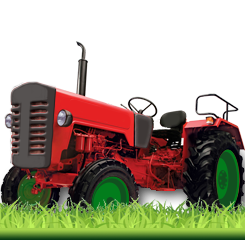

CROPS
A crop is a plant grown in large amounts for the reason of harvesting the majority of the plant bulk for selling or subsistence. The usual plants are grains, fruits, and vegetables. According to the National Geographic, crops fall into six usage categories:
A crop can sometimes be categorized as a "bumper crop." This is a larger amount than usual.
Wild Harvesting
Wild Harvesting is the act of gathering plants, fruits, vegetables, nuts and other edible sources from a wild area and consuming them. Wild harvesting is also used for a particular reason other than consumption. Regardless of the reason, any kind of wild harvesting of plants can alter ecosystems and wildlife habitat.
Plant harvesting from wild sources is never a good idea and may even be against the law in your state. Many plants in nature can also be poisonous.
The Dust Bowl
In 1930, severe drought hit the Midwest and Southern Great Plains, followed by massive dust storms a year later. As the dry winds continued to blow, the exposed bare dirt surface kicked massive dirt into the air, causing huge thick plumes of dust to go high in the sky. Many farmlands had loose, over-worked fields that did not have deep-rooted prairie grasses or shrubs to hold the soil in place, causing fields to become severely eroded and crops to fail.
It may have only been a problem for a short period of time, but a series of successive drought years followed throughout the decade, which made conditions even worse yet, and eventually bringing farmers on the Plains to an environmental disaster. Eroding soil led to massive dust storms and economic devastation, especially in the Southern Plains area. The relentless conditions lasted for about a decade, and it wasn't until 1939 that regular rainfall returned to the region, bringing the Dust Bowl years to an end.
President Franklin D. Roosevelt established a number of measures to help alleviate the problems that afflicted U.S. farmers. in 1935, Congress established the Soil Erosion Service and the Prairie States Forestry Project. These programs put local farmers to work planting trees to act as windbreaks on farms across the Great Plains as well as other new farming techniques designed to fight the problem of extreme soil erosion.
Crops: A Timeline
The history of agriculture on the North American Continent starts with the indigenous peoples. The American Indians began farming centuries ago when they were raising a variety of crops. During the timeline of their uninterrupted inhabitancy, Indians from all over the North American area raised squash, beans, corn, potatoes, tomatoes, peppers, pumpkins, avocados and others. From their crops came some notable dishes, like chili, corn tortillas, guacamole, mole, salsa, tacos, tamales and gorditas.
Sustainable Agriculture
With our world's population approaching 8 billion people, there's a transformation taking place in the way that U.S. farmers are raising their crops. More farmers are becoming entrepreneurs by taking a different path toward better sustainability, environmentally friendly farming methods, and a more sound approach toward economic viability. This approach involves innovative practices based on science that maximizes productivity and profit. Moreover, the sustainable practices involve methods that minimize damage to the environment.
All farming systems can benefit from sustainable agriculture, including small and large farms, and farms that produce crops of foods, fibers and fuels.
